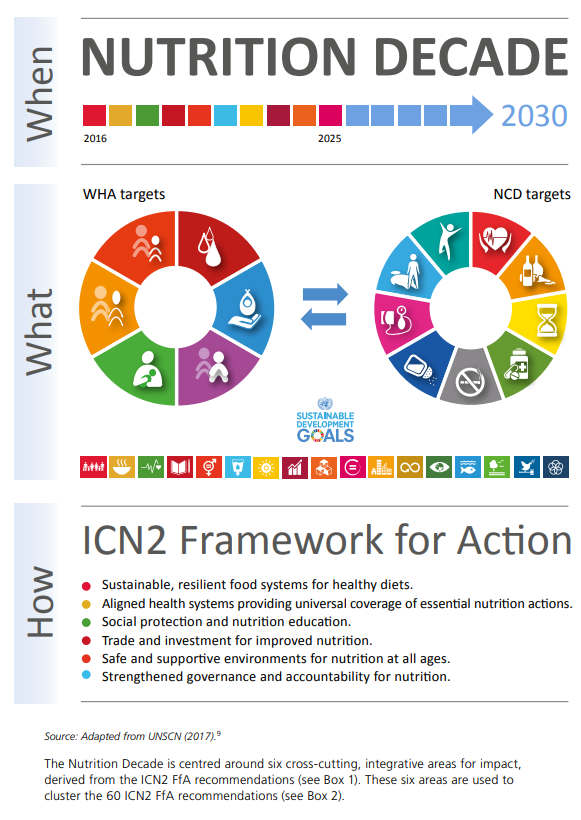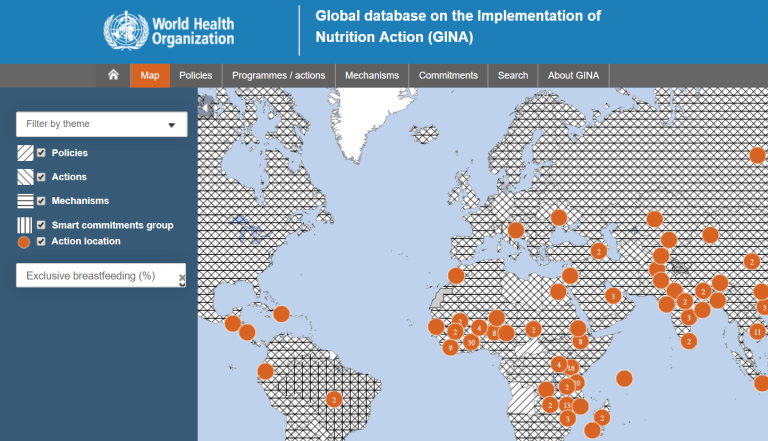Progress on nutrition commitments: where are we now?
Between May 20-28 of this year, the World Health Organization (WHO) will hold the 72nd annual World Health Assembly (WHA). The WHA is the decision-making body of the WHO at which Member States gather to review and decide on policies, budgets and organizational procedures. On the agenda for the WHA this year is a progress update and second biennial report on implementation of the Rome Declaration on Nutrition and the Framework for Action, in support of the United Nations Decade of Action on Nutrition (2016-2025). The WHA is expected to discuss how the Global database on the Implementation of Nutrition Action (GINA) is being used to track implementation of commitments in support of the Decade of Action on Nutrition.


The Second International Conference on Nutrition was held in November 2014 in Rome, Italy. The conference was a high-level intergovernmental meeting focused on addressing malnutrition globally. The two main outcomes of the conference were the Rome Declaration on Nutrition and the Framework for Action. These documents serve as accountability mechanisms in which world leaders commit to establishing national policies to address malnutrition and transform food systems to ensure every person has access to safe, sufficient, and nutritious food. The WHA endorsed these documents in 2016 and launched the “United Nations (UN) Decade of Action on Nutrition.” The Decade of Action on Nutrition includes six global targets originally endorsed by the WHA in 2012.

Global Nutrition Targets 2025
Source: World Health Organization, https://www.who.int/nutrition/global-target-2025/en/
To monitor progress of implementation of country-level Rome Declaration commitments, the WHO developed the Global database on the Implementation of Nutrition Action (GINA).
What is the GINA?
The GINA is a platform to monitor and assess national nutrition policies, actions, and programs. As one the core activities of the WHO Department of Nutrition for Health and Development (NHD), the GINA is a global repository and interactive platform which is informed by global policy reviews and monitoring activities in collaboration with WHO offices and partners. Fundamentally, GINA seeks to provide users with information on what nutrition commitments have been made, who is taking what action in which settings, and when, where and why these policies and actions are being implemented.

GINA includes three types of data: (1) policies (e.g. nutrition-specific and nutrition-sensitive national strategies); (2) programs and actions (e.g. coverage of nutrition-specific and nutrition-sensitive interventions); and (3) mechanisms (e.g. multisectoral nutrition coordination bodies). As of now, there are 6665 actions in 192 countries, 2247 policies in 200 countries, and 507 mechanisms in 162 countries, and 10 commitment groups in 3 countries. Selected nutritional topics included in the database include breastfeeding, complementary feeding, stunting, low birth weight, vitamin A, iodine, iron and/or folic acid, overweight, diet-related NCDs, nutrition and HIV, and the code of marketing of breast-milk substitutes.
What comes next?
Platforms such as the GINA help visualize whether countries have policy-enabling environments needed for successfully reaching the WHO Global Nutrition Targets. However, support is needed to ensure that the nutrition targets can be fully measured. DataDENT is working with partners, including WHO-UNICEF, to ensure systems and tools exist to correctly measure indicators and inform nutrition policies and programs.
Implementation of the Rome Declaration commitments will be summarized in a third biennial report, which will be released at the 2020 Nutrition for Growth meeting.
